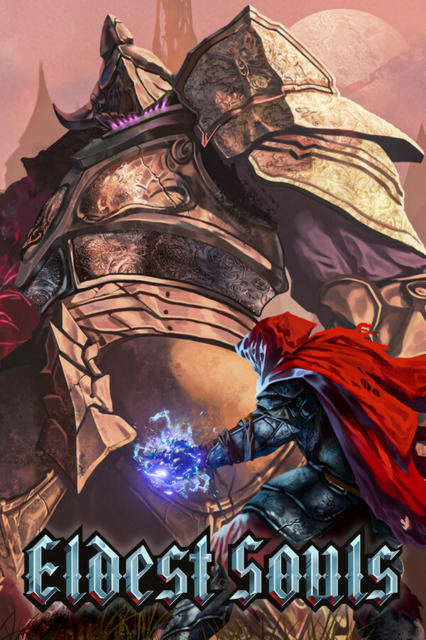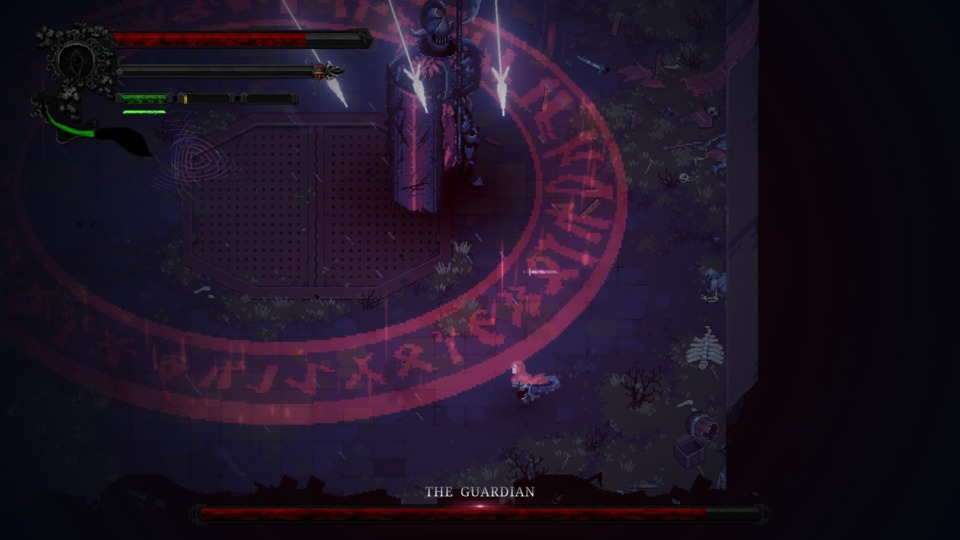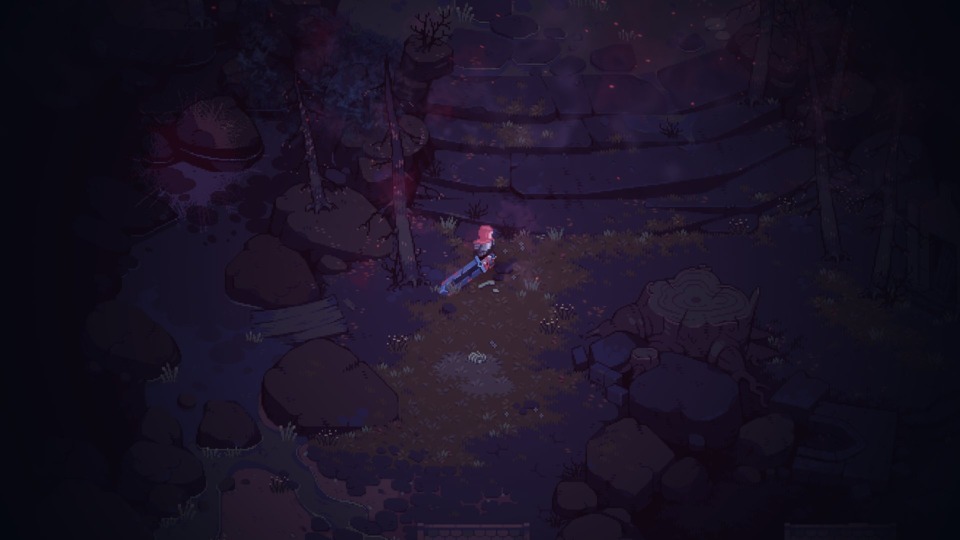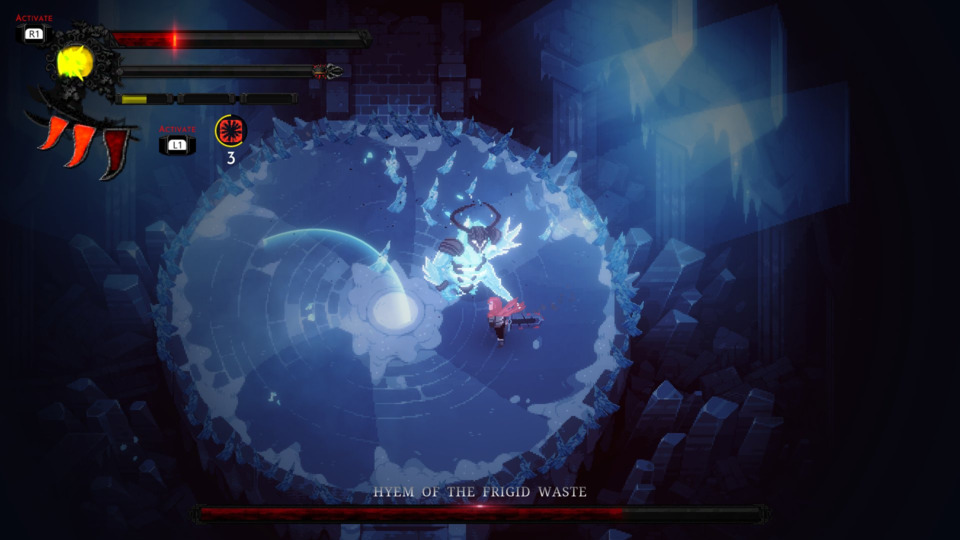Indie Game of the Week 279: Eldest Souls
By Mento 0 Comments

2022 is shaping up to be an excellent year for fans of FromSoftware's challenging Souls action-RPGs, debuting one of its most highly-rated (and oddly mainstream-revered) hits with Elden Ring. However, it might surprise you to learn that this so-called "Souls" "franchise" has been inspiring smaller developers since its inception in 2009, and we've seen regular installments from the Indie circuit that gamely attempt to match the same vein of Gothic medieval, post-apocalyptic despair that is FromSoft's stock and trade. These are grim worlds in which little hope remains, though were once grand and exquisite enough that traces of their former glory are everywhere you look. While just about keeping up with Souls aesthetically, in terms of gameplay these Souls-protégés - like with many Indie takes on broader high-budget games - are forced out of financial necessity to focus on the traits and aspects of that franchise that appealed to its designers most.
Eldest Souls is similar to something like Titan Souls in that it makes the decision to streamline the whole Soulsian paradigm of exploring, fighting enemies, dodging traps, and finding secrets to just the linchpin boss encounters: while there's a limited amount of exploration outside of these battles, it's purely for the odd bit of lore and conversations with NPCs and, really, a means of letting the player take a break. There are no regular enemies to fight, no consumable items to find or purchase, no crafting or equipment to upgrade, no experience points to earn, and any skill points you acquire result directly from the boss fights themselves, of which there's only about eight or nine. Despite this, the game has a pretty detailed skill tree for upgrades that it splits between three mutually-exclusive paths, each inspired by a hypothetical playstyle: one based on relatively safe but low-damage hit-and-run tactics (maybe for those who like a dex weapon build and avoid "fat-rolling" at all costs), one based on heavy damage at high risk (those who prefer the big two-hander weapons where you might need to tank it out a little), and one based on counters (for the type of freak who goes straight to exploiting any parry system a game might have). In addition to skill points, bosses drop personalized crystals that can be infused into the protagonist's repertoire of attacks to power them up in specific ways: for example, attaching the gemstone gained from the first major boss, a corrupted guardian knight, to one's dash produces little pools of health-draining corruption if the dash successfully evades an attack.

The core flow of an Eldest Souls boss fight typically involves charge attacks: these are performed by holding the attack button for half a moment and then following it up with as many chain hits as you think you can safely land before the boss's next attack arrives (at which point it's prudent to dodge roll away or simply walk out of the attack's range, depending on what it is). The reason you want to go for charge attacks over the regular light attacks is that the charge attacks also heal you: you have a fixed 100 HP and most boss attacks can take away anywhere between 15 to 80 of these points in one strike, with the more telegraphed ones obviously being the more damaging. You can perhaps afford one or two mistakes before dying, and it's necessary to recover that damage quickly through these invigorating combos before any more damage comes your way; of course, the waiting required to launch these charged hits puts you at risk as well. Each charged hit combo builds up a gauge called Bloodthirst which can be cashed in for a "Bloodburst" finishing attack that does a significant uptick in damage; Bloodbursts being something else that can be upgraded in various ways by attaching boss crystals to it. Finally, there are the dodge rolls, which have a separate stamina meter and usually only allow you to dodge three times before you need to wait for them to recover - dodge rolls provide many invincibility-frames, allowing you to avoid almost any attack with the right timing, so their usage has been strictly limited here.
Visually the game has that Souls atmosphere on lock, using a very detailed pixel style that looks incredible with the effects and vignetting on top. However, this is mostly limited to the exploration parts between fights: most of the arenas themselves are a less lush, though this might be in service of removing distractions that could get in the way of the visual effects generated by the boss's attacks and yours - it's important for those to stand out, after all. The music's fine but doesn't stand out particularly, and its lore items and NPC conversations are too few and far between to build much of a rewarding, context-heavy narrative the ways Souls and the more ambitious (or longer) Souls-likes can. There's some kind of citadel built in the time of the Ruler Gods that humans have long since rebelled against, and there's a few wayward deities still lurking around causing trouble along with their overlord somewhere. You just poke around ruins until the boss music starts and then suddenly you're spending the next hour learning their patterns and trying to bring them down, usually unsuccessfully.

So here comes the unfortunate part: Absolutely nothing about the way Eldest Souls plays actually feels right. I'm naturally doing it a disservice comparing it to something like an Ys in my mind, which is a franchise leagues beyond what this game can do given Falcom is a studio that has been making third-person action-RPGs of this sort for a very long time, but even something in the same top-down 2D Indie arena like Titan Souls or Jotun or Death's Door feel markedly more enjoyable to play in part because there's a greater level of fairness involved, more room for error, and a lot less chaos.
If I was forced to narrow down a specific reason why the visceral feel of the game is lacking in comparison to those listed above I couldn't really point to one single major issue but rather a hundred smaller ones that almost elude detection, including but not limited to: the way that most of your reliable attacks like the basic life-recovery charge or the specials send you whizzing across the screen with an achingly small chance of accurately hitting your preferred trajectory given the much-maligned precision of analog sticks when trying to hit a specific angle; or how your specials require filling up a bunch of gauges in the corner of your UI that demand you focus attention away from the relentless attacks of the boss to check their status if you don't have the peripheral vision of a wall-eyed owl, often leaving you open to harm; or the way many enemy attacks have hitboxes that extend just a little beyond what's visible on the screen; or how you can't go behind the enormous sprites of the bosses despite how that unintuitively goes against the rules of the perspective used, so you get hung up on a mass that shouldn't be there and die; or how the game makes the bizarre decision to vastly reduce the utility of dodge rolls with their finite charges and slow stamina recovery despite their tactical prominence in every other game of this type to such an ubiquitous extent that I can guarantee you'll never get used to not always having a "get out the way now" button on demand; or how a fight can just be over in two hits if you get caught by one of the boss's stronger attacks, or those that can hit multiple times if you happen to be in the wrong place, since you have the fortitude of a leprous Dickensian street waif in wintertime. The combined effect produces these sluggish, inaccurate, and deeply capricious fights that need as much luck as they do skill and patience.

It's essentially a game built for those who have completed Dark Souls a dozen times over, the last run of which completely in the nude (or as close as that game engine allows), and are looking for their next high-level-play fix. For those of us who prefer to engage with these Souls-esque games just the one time for all their fresh surprises and discoveries, rather the diehards and speedrunner types bashing their heads against a wall for hours trying to execute on a boss absolutely perfectly despite having already figured them and their attack patterns out long ago in a previous hard-fought victory, this really isn't going to be the game for you. Fortunately, this particular thematic subgenre has become so populous by now that you can very safely skip this game and save yourself the annoyance of trying to grapple with its BS arbitrariness. Then again, if you're one of those who think Sekiro: Shadows Die Twice is the best FromSoftware game because it kicks away the safety ladder of being able to level up and be better prepared (by way of consumables and upgraded gear) for a boss fight that has already repeatedly trodden you into the dirt in your current state, maybe this will be more your speed. The extremely limited imagination behind its trophy set should give you all the evidence you need of the director's goals here: one each for defeating every boss, one each for defeating every boss on a harder difficulty, and one each for defeating every boss without incurring a single hit.
I'm certainly no stranger to hard games - as someone who believes Bloodborne is the best game of the previous decade, it'd be an odd intolerance to have - but there are some elusive differences between a tough game you're willing to work at to one day overcome, and another where the uphill struggle scarcely seems worth it. I feel like if I go back to make any more progress it'll be done purely out of spite, and I'm not sure that's a healthy way to go about enjoying this hobby of ours.
Rating: 2 out of 5. (So far?)
| < Back to 278: Spiritfarer | The First 100 | The Second 100 | > Forward to 280: Coffee Talk |
